Holistic Management for Horse Properties – Part 9
Grazing management and planning for horses
Published in the Horses & People Magazine & Hoofbeats Magazine
By Mariette van den Berg, BAppSc. (Hons), MSc. (Equine Nutrition)
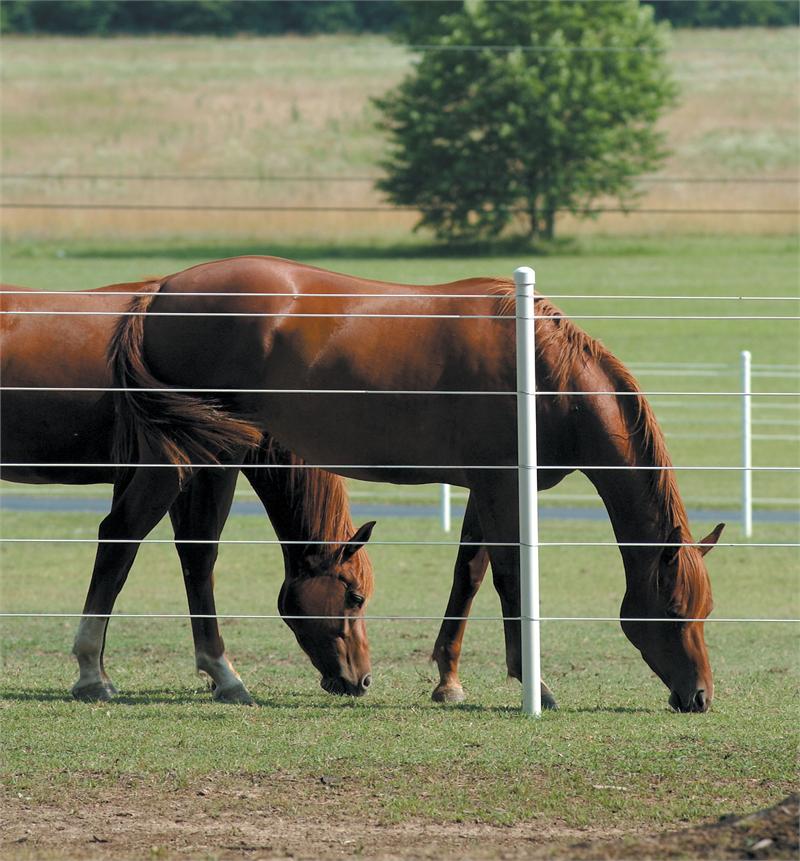 Over-grazing and over-resting grasses are common problems on horse properties. As we have already highlighted, these problems can result in horse-sick pastures with poor quality grasses containing weeds, compacted, eroded, and salinised soils, and manure build-up with parasite pollution. Moreover, over-grazing can also trigger the accumulation of NSC in grasses, which puts horses at risk of developing digestive and metabolic disorders such as equine metabolic syndrome and laminitis.
Over-grazing and over-resting grasses are common problems on horse properties. As we have already highlighted, these problems can result in horse-sick pastures with poor quality grasses containing weeds, compacted, eroded, and salinised soils, and manure build-up with parasite pollution. Moreover, over-grazing can also trigger the accumulation of NSC in grasses, which puts horses at risk of developing digestive and metabolic disorders such as equine metabolic syndrome and laminitis.
In the wild, horses have adapted to eating prairie (low-quality) grasses in semi-arid regions and travelling significant distances each day in order to obtain adequate nutrition.[1] In addition, predators that hunt horses push them along: wild horse populations tend not to stay in one place for a long time. Horses move along while grazing, which means that, in general, they only disturb and foul the ground for a small period of time. When horses move on, the grazed area has time to recover over the season.
As you may have observed yourself, horses generally leave the grasses where they urinate and dung untouched. In the wild, horses do not return to a grazed and fouled area until nature has cleaned up and restored the area. This means that, when we keep horses in captivity, we should aim to mimic this natural migrating and foraging process; therefore, we must manage and plan the movement of our horses. If horses are left in any one place too long, or if they return to a place too soon, they will over-graze plants and compact and pulverise the soils.
Many horse owners use a rotational system if they have multiple paddocks available for their horses; however, management and rotations are often done randomly without a solid plan. Without correct management, paddocks or pastures suffer from over-grazing of grasses. To be able to provide sufficient amounts of grass to meet the dietary needs of horses, and to avoid over-grazing or over-resting of the grasses in our paddocks, we must develop proper grazing plans. Adequate knowledge about grass and legume growth and leaf area management is necessary to be able to get a clearer picture of where horses need to be and when. These factors determine how we can plan their movement.
Grass growth and development
To make good pasture management decisions, we need to understand the growth and development patterns of grasses and legumes. Pasture use and production can be improved by carefully managing forage plant grazing. Making grazing decisions based on plant growth may seem tedious, but it is the key to successful grazing management.[2]
Structure of grass plants is similar among the many species of grasses.[3] The leaf blade is, more or less, the horizontal part of the leaf held away from the plant. The primary function of the blade is to gather light and carbon dioxide, along with water, to make carbohydrates through the process of photosynthesis.
The leaf sheath is the part of the plant that wraps around the stem. It also plays a role in the photosynthesis process, and is the channel for carbohydrates made by the leaf blade (figure 1).[4]
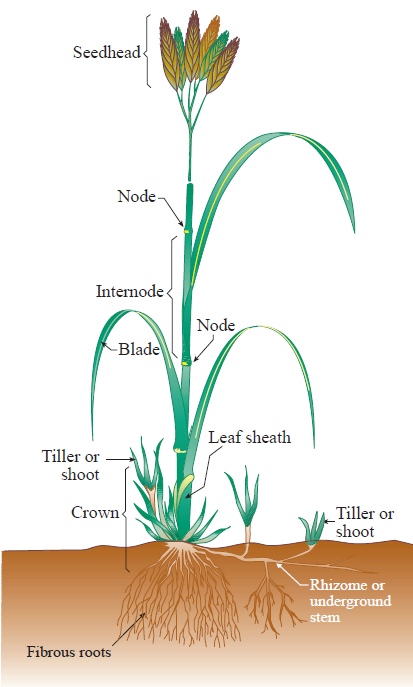
Figure 1. The parts of a grass plant. (Not all grasses have rhizomes.) USDA Natural Resources Conservation Service
The stem of the plant supports the seed heads and transfers carbohydrates from the leaves to the developing seeds. The embryonic seed head is fully formed at the base of the stem, which contains all the future leaf buds and stem sections.12 The seed head is also referred to as the ‘flower’ of the grass plant.
The crown of the plant is the portion that connects the stem to the roots. It serves as storage for excess NSC that is not needed for growth or reproduction of the plant.[3,4] In some species of grasses, new shoots (called ‘tillers’) may arise from the crown. This is another reproductive strategy: vegetative reproduction, wherein new plants are created without the formation of seeds.[3]
New tillers can also be formed on stolons, which are the horizontal stems, or runners, that form above the ground. Rhizomes are underground, horizontal stems from which new tillers arise. As reproductive organs, both stolons and rhizomes collect excess NSC for this purpose.[3]
The root system of grasses is fine, highly branched, and may extend metres into the soil vertically as well as horizontally. The mass of the roots remains equal to the mass of the plant above ground. If the biomass of the tops changes from growth or removal, the biomass of the roots will reflect this change.[2] Roots seek, collect, and deliver nutrients and water to the rest of the plant. Roots are vital to the overall health of the plant.
Grass develops through a sequence of stages. There are three primary developmental stages in grasses that you must be able to recognise for grazing management[3] (figure 2):
- vegetative
- elongation
- reproductive
The vegetative growth period is the growth of leaves. The stem, with its growing point, remains compact near the soil line. Once a critical number of leaves have formed on a tiller, the older and lowermost leaves generally die at approximately the rate of new leaf growth, and the number of leaves on a tiller remains relatively constant.
Elongation is the stage during which stem internodes lengthen. This is sometimes called jointing. The elongation stage usually begins in response to changing length of days. During this stage, only the upper internodes elongate. The lower internodes do not elongate, but remain at the base of the plant. These lower nodes, internodes, and dormant buds, together with related tillers, form the crown of the plant. When the developing seed head begins to push through the uppermost leaf sheath, the plant has reached ‘boot stage’, which is the end of elongation.
The reproductive stage is the period in which the seed head develops, pollination occurs, and the seed develops.
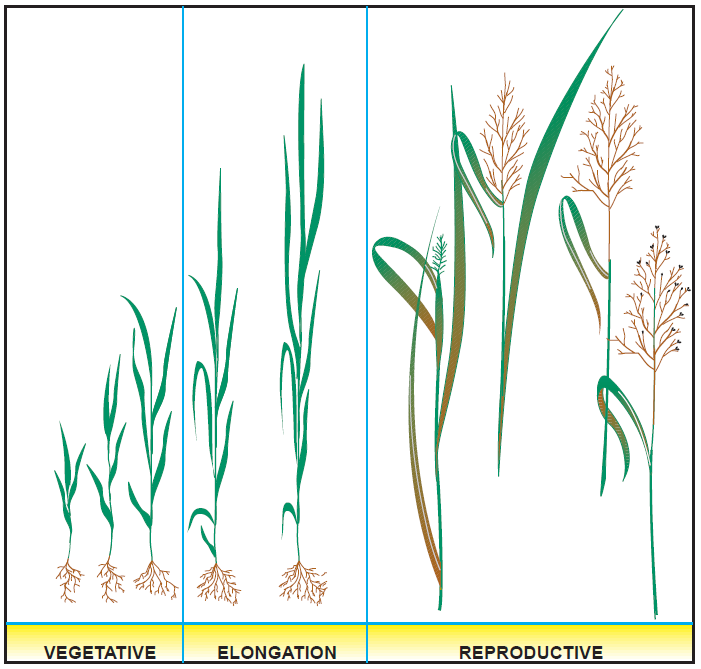
Figure 2. Developmental stages of grass growth.
USDA Natural Resources Conservation Service
Legumes
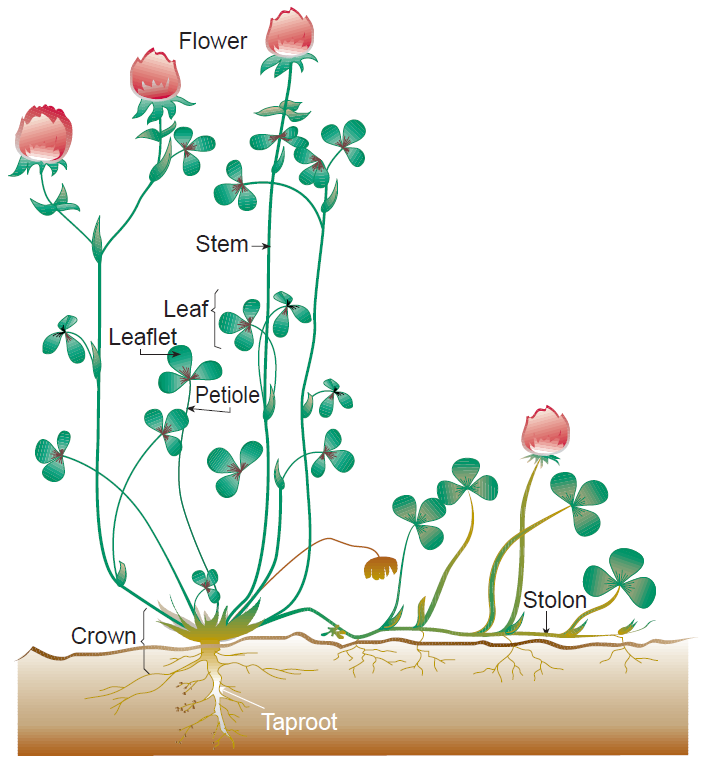
Figure 3. The parts of a legume plant. (Not all plant parts are present on all species). USDA Natural Resources Conservation Service
Legumes are a special class of plants that can ‘fix’ atmospheric nitrogen into their own plant-available nitrogen. Legume development differs from that of grasses.[3] Stems begin to grow in length immediately, with leaves arranged alternately on opposite sides of the stem (figure 3). Legume stem length and the amount of branching varies among species. Legumes can branch at leaf-stem junctions; flowers can form on the main stem or on branches.
Legumes develop as vegetative growth to an early stage of reproduction called bud stage. Buds are green, immature flowers that develop quickly to open bloom or flowering stage.
An obvious difference among forage legume species is the type of growth habit. Lucerne has an upright growth habit. Red clover has an intermediate growth habit. White clover is a pasture legume that grows close to the ground. The stems of white clover (stolons) lie flat on the soil surface and spread by buds along the stem, forming stem branches.
Plant growth, growth rate, and growth cycles
Growth rate is how fast the plant adds new dry weight over a period of time. When a plant is short with minimal leaf area, its daily growth rate is slow. As the plant accumulates increasingly more leaf area, its ability to capture sunlight increases rapidly and its growth rate per day reaches its highest level in the late vegetative phase.[3] As stems develop to flowering and seed production, few new leaves form. The lower, older leaves die, growth rate slows, and yield levels off (figure 4). During reproduction, the dry weight of the plant is not increasing but is being redistributed within the plant as stems mature and seeds develop.
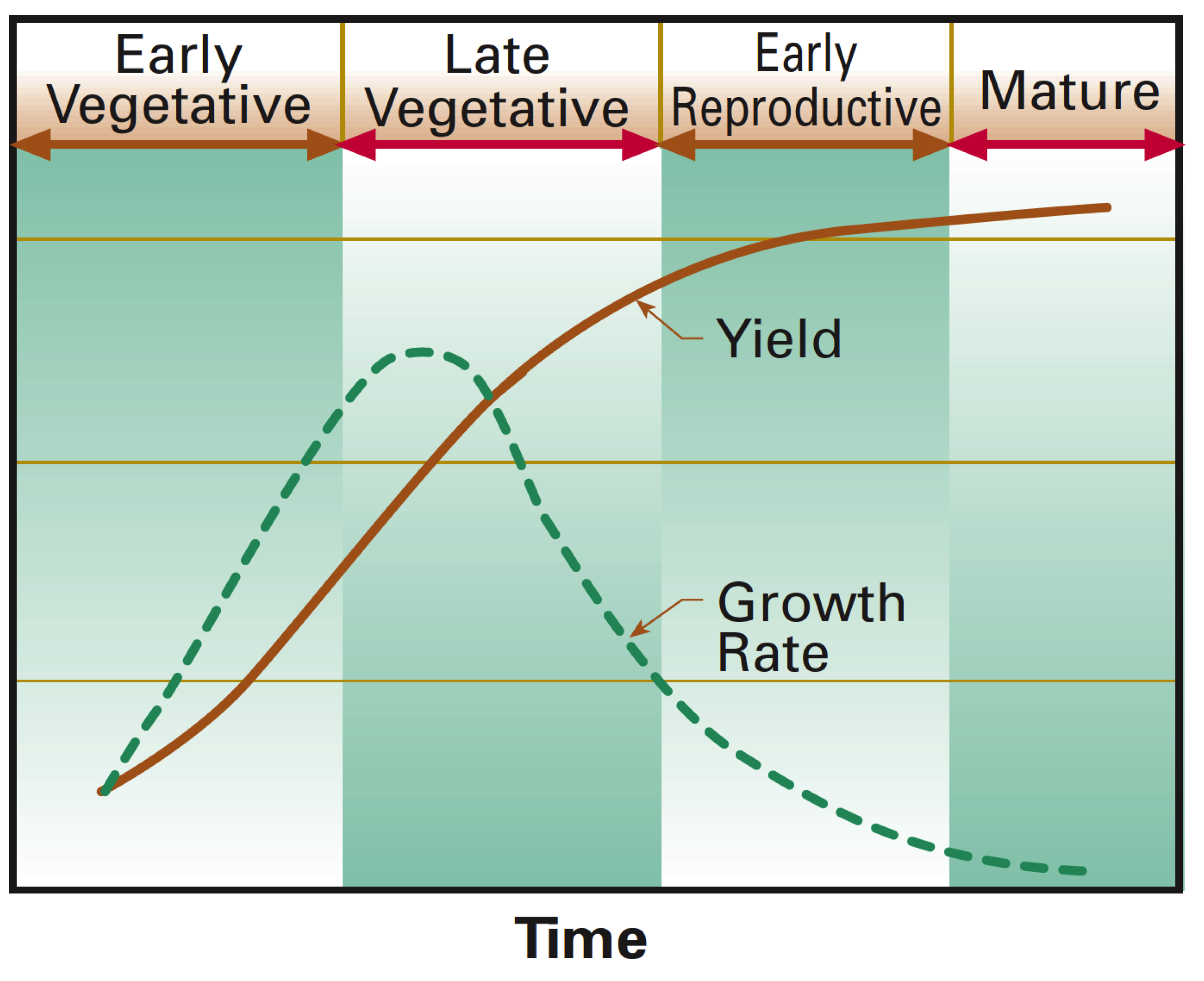
Figure 4. Growth rate changes during growth cycle. USDA Natural Resources Conservation Service
Each pasture plant begins its growth in spring from dormant crown buds, using carbohydrates stored in the roots and crown from the previous growing season. Though relatively slow, the plant’s early spring growth rate is strong as long as there is an ample supply of stored energy. Spring growth can be as much as two weeks earlier when plants are vigorous. When stored energy levels are low because of over-grazing the previous year, re-growth and the production of new leaves proceed at a very slow rate. As plants grow and leaf area increases, growth rate and plant development can proceed rapidly and restore the level of stored carbohydrates.
The productivity of the pasture at any time during the grazing season is determined primarily by the types of pasture plants, weather, and soil conditions. Productivity is also influenced by grazing management, leaf area, rest periods, and the vigour of the pasture plants.
Grazing and growing points
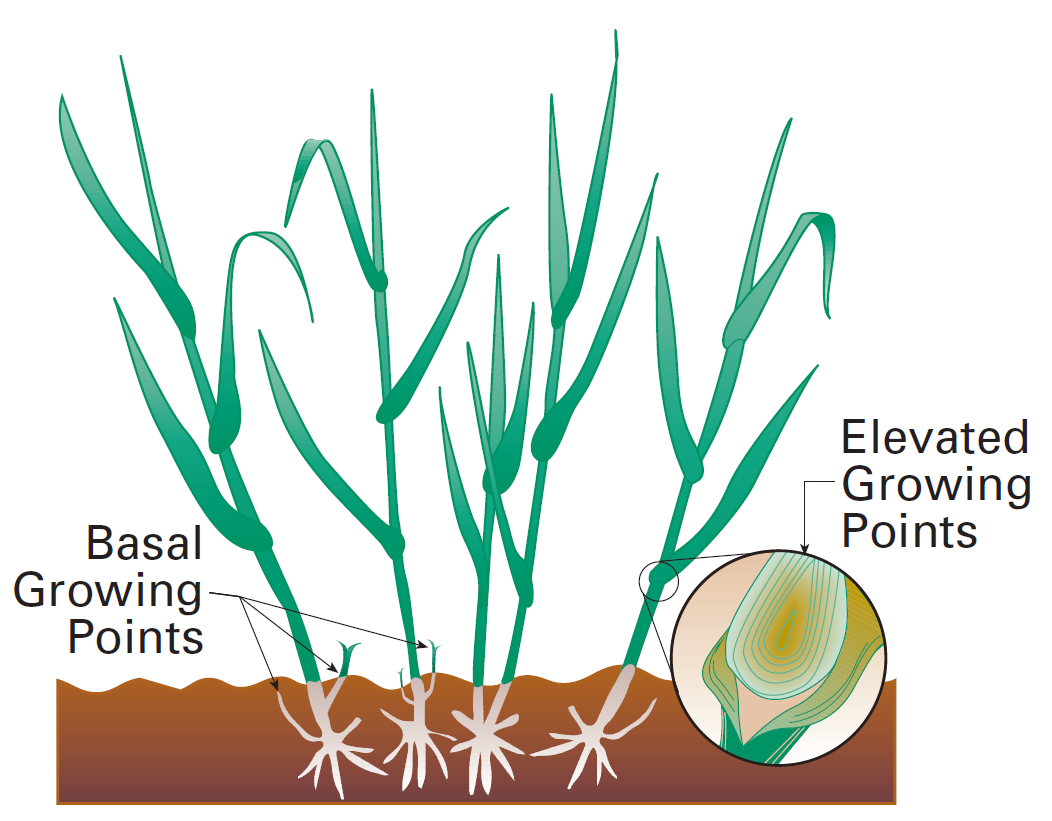
Figure 5. Elevated growing points are vulnerable to removal by grazing. USDA Natural Resources Conservation Service
In spring, the leaves of grasses grow from an active growing point near the soil surface. Grazing removes only leaf tips without greatly interfering with the activity of the growing point. As changes in length of days and temperature cause the elongation of the seed stem, the growing point is elevated and can be removed by grazing or harvest (figure 5).[3] If the active growing point is removed, leafy tiller growth develops from dormant basal buds as new tillers. Most pasture grasses produce seed stems only in the spring (or summer, depending on the type of grass).
After an initial grazing or hay harvest in late spring removes the seed stems, only leafy vegetative growth is present for the remainder of the grazing season. Warm-season grasses, such as Rhodes grass, undergo the same basic developmental stages and recovery responses during the warmer summer months — only a month or two later.
For legumes, the location of growing points helps to determine the response to grazing.[3] The growing point for lucerne is near the tip of the growing stem and is easily removed by grazing. The growing points for red clover are lower on the plant and less susceptible to removal by grazing. Lucerne and red clover quickly produce new, leafy re-growth from dormant crown buds and lower stem branches when the growing stems are grazed or cut. The growing points of white clover are at the soil surface on trailing stolons and are virtually resistant to removal by grazing.
Grazing and leaf area management
If grazing animals remove only a small amount of the active green leaf area, photosynthesis can proceed and the plant can replenish carbohydrate stores while top and root growth progresses.[2] But if grazing animals remove most of the available leaf area every few days, the plant allocates nearly all growth energy to new leaf growth, the root system diminishes, and less energy is stored. This frequent leaf removal, without adequate time for the plant to restore its vigour, is the physiological basis for over-grazing.[2] Over-grazed pastures produce far below their potential, maintaining only a low-stand density and poor vigour. In addition, over-grazing results in an increase in NSC in the stems of grasses.[4]
The amount of rest that a grazed plant requires to recover its vigour and replenish an effective leaf area is influenced by the period in the growing season and the amount of active leaf area remaining following the grazing period.[2,3] A cool-season grass can recover in two to three weeks during its ideal spring and autumn growing periods, but may require six weeks or more to recover during the more stressful months of July and August.
Warm-season grasses, on the other hand, grow very slowly during the cool months of spring and autumn, but recover quickly following four to six weeks of rest during their ideal summer growing period. The rest (or recovery) period can be shortened somewhat by leaving a taller leaf area remaining following grazing.
This residual leaf area can contribute photosynthesis energy quickly, supplementing stored energy reserves to aid in a much faster recovery.[2] Cool-season grasses, mixed cool-season grasses, and legumes should have 8–10 centimetres (3.1– 3.9 inches) of residual leaf area for rapid recovery, and leave about 10–20 centimetres (3.9–7.8 inches) of leaf area on warm season grasses following grazing.[3]
Advance cell grazing system
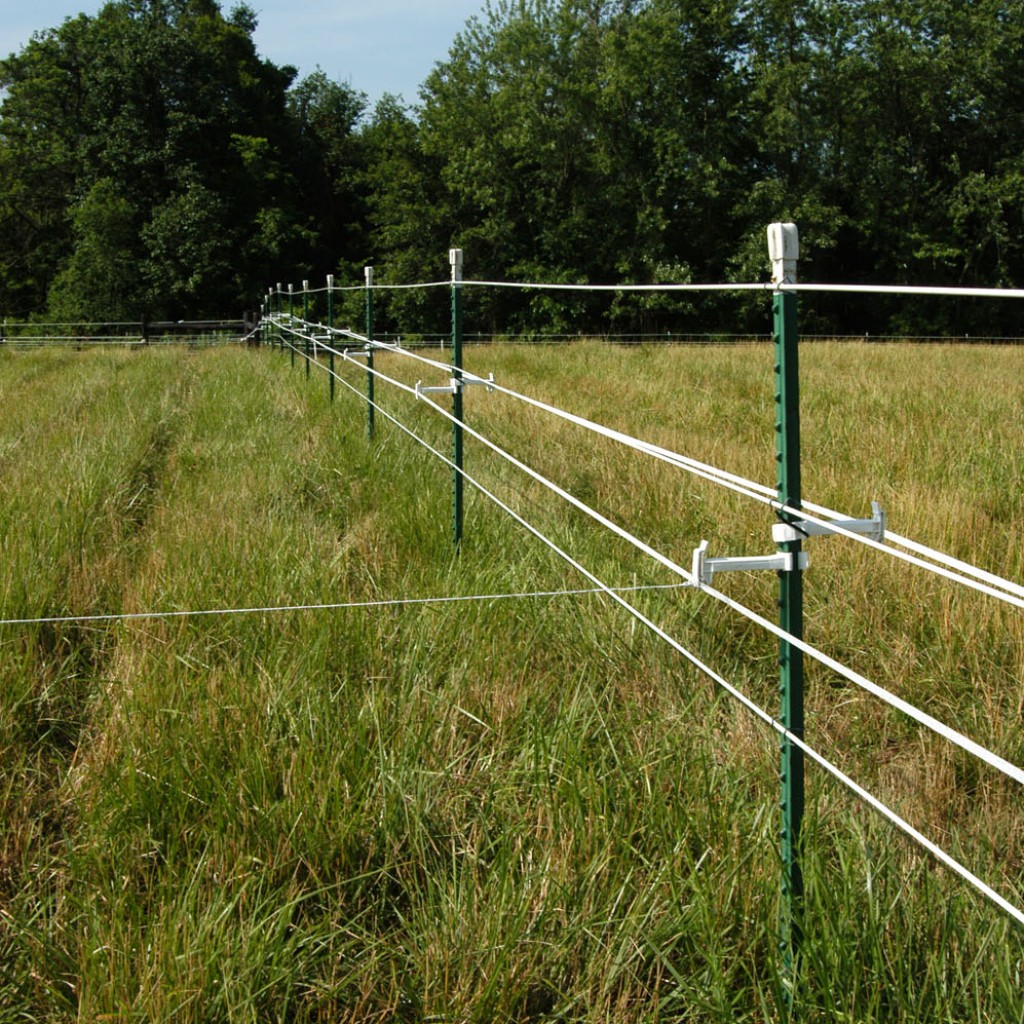 One of the dilemmas we encounter with pasture management is that grasses recover at different rates because of species characteristics and other factors. If you have only a few paddocks, which you have to use for long grazing periods, you are likely to over-graze some plants. Rapid moves favour the growth of fast-growing plants, but horses return too soon for the slow ones.[2] Slow moves may expose fast-growing plants to a second bite before they have recovered. Some plants are weakened, and some may even die. However, in terms of the bare and capped soil that can result, partial rest is more damaging than over-grazing. To overcome the problems of varying recovery rates and partial rest, we can build up to high paddock numbers and develop a strip-grazing system or design a sacrifice area (to remove horses from the pastures).
One of the dilemmas we encounter with pasture management is that grasses recover at different rates because of species characteristics and other factors. If you have only a few paddocks, which you have to use for long grazing periods, you are likely to over-graze some plants. Rapid moves favour the growth of fast-growing plants, but horses return too soon for the slow ones.[2] Slow moves may expose fast-growing plants to a second bite before they have recovered. Some plants are weakened, and some may even die. However, in terms of the bare and capped soil that can result, partial rest is more damaging than over-grazing. To overcome the problems of varying recovery rates and partial rest, we can build up to high paddock numbers and develop a strip-grazing system or design a sacrifice area (to remove horses from the pastures).
In any environment, over-grazing and damage from trampling bear little relationship to the number of animals, but rather to the amount of time that plants and soils are exposed to the animals.[2]
Grazing and recovery periods are always linked. Every time that we shorten a grazing period in one paddock, we shorten the recovery period in all paddocks — and risk over-grazing many more plants. To minimise this risk, it is important to plan the recovery period first. Once we have determined the length of an adequate recovery period, we can use that figure to calculate the average grazing period for each paddock. For example, on a property with six equal paddocks, a ninety-day recovery period dictates an eighteen-day average grazing period per paddock. Grazing period (GP) is desired recovery period (RP) divided by the number of other paddocks (GP = RP ÷ (Total paddocks –1)).
During rapid growth, severely bitten plants might require only a thirty-day recovery period. Thus, average-grazing periods would fall to six days. Unless you have many paddocks available, the rule of thumb is:
Slow growth = slow moves (and longer recovery period)
Rapid growth = rapid moves (and shorter recovery period)
When in doubt, use slow moves to minimise over-grazing. This rule runs counter to instinct. Naturally, we want to keep our horses longer on green, flushing grass and move on sooner when it is paler and obviously growing slowly. But, as we have mentioned, this cuts days off the recovery time for all paddocks. Because this fact is easily overlooked, all moves should be planned visually. A chart enables us to immediately see the loss of recovery time and avoid over-grazing.[2]
This grazing system can be applied to small and large properties alike. By dividing pasture areas into multiple grazing cells, we can increase the number of paddocks. The more divisions of land we make, the more recovery time per day of grazing each paddock gets. These divisions can be made with electrical mobile fences, moving areas around. On smaller horse properties, it may be useful to design a sacrifice area and/or central-point system to reduce over-grazing and allow the pastures to rest.
Additional feeding
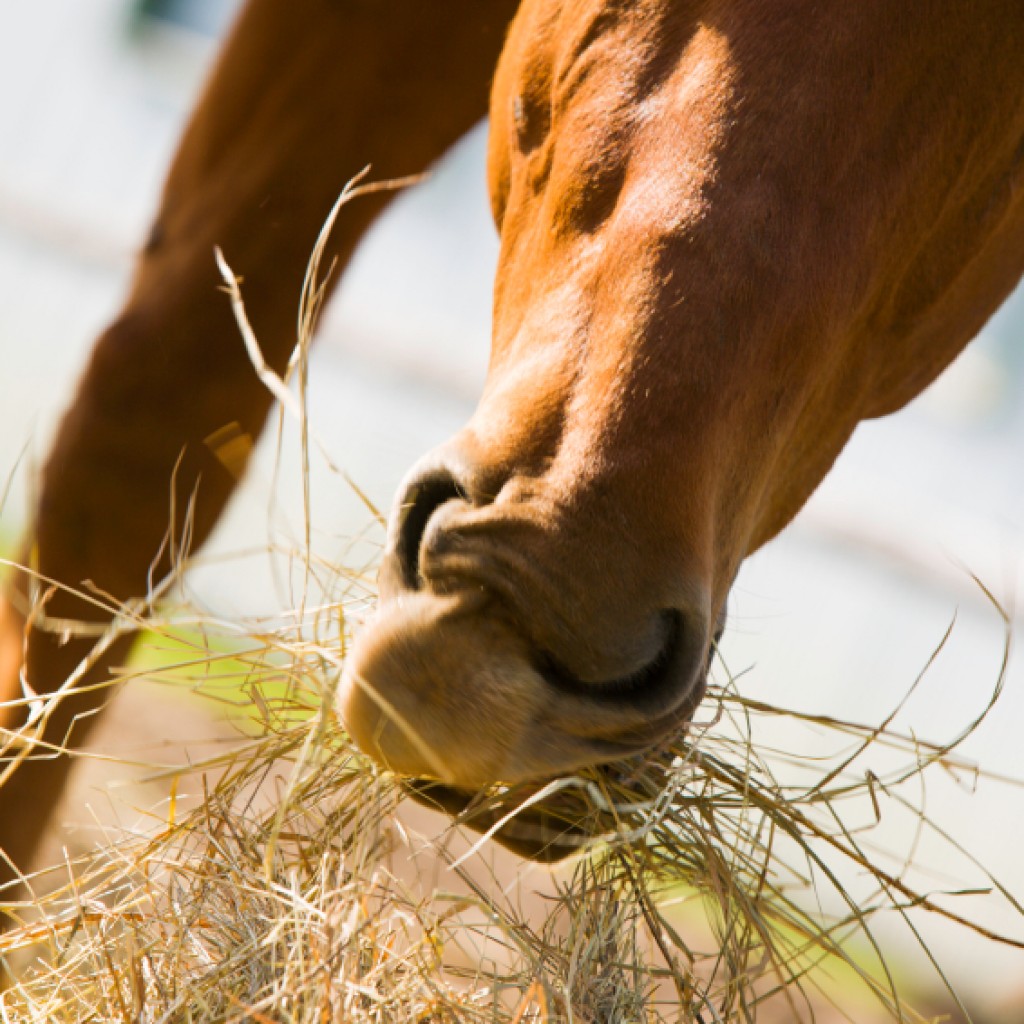 It would be ideal if we could meet the nutrient requirements of horses while grazing all year round; however, in reality, there are many factors that can influence the nutrient requirements of our horses and food availability. Therefore, it is a good idea to develop an additional forage plan. Some horse owners have the option to produce their own conserved forages on a property, while others need to import feeds. Small and large properties are both able to develop forage trees and shrub systems to provide alternative forage sources during the non-growing season and reduce the import and feeding of hay. We discuss forage trees and shrubs in an earlier section. These articles describe in more detail the different roughage sources available for horses and the integration of forage enrichment and slow feeding strategies in pasture systems and sacrifice areas (lane-ways and central-point systems).
It would be ideal if we could meet the nutrient requirements of horses while grazing all year round; however, in reality, there are many factors that can influence the nutrient requirements of our horses and food availability. Therefore, it is a good idea to develop an additional forage plan. Some horse owners have the option to produce their own conserved forages on a property, while others need to import feeds. Small and large properties are both able to develop forage trees and shrub systems to provide alternative forage sources during the non-growing season and reduce the import and feeding of hay. We discuss forage trees and shrubs in an earlier section. These articles describe in more detail the different roughage sources available for horses and the integration of forage enrichment and slow feeding strategies in pasture systems and sacrifice areas (lane-ways and central-point systems).
Good pasture management goes hand in hand with proper grazing planning. In addition, if you have paddocks that are severely over-grazed and compacted, you may want to exclude some paddocks from your plan and perform some mechanical soil development first by deep-ripping your pastures with a Yeomans Keyline Plow, sowing deep tap-root grasses and plants that de-compact and build soil (as per previous sections). After a couple of seasons, these pastures will be ready to be included in the grazing plan once more.
Further reading:
- Harris, P.A. 1999. How Understanding the Digestive Process Can Help Minimise Digestive Disturbance Due to Diet and Feeding Practices, In: Harris, P.A., Gomarsall, G.M., Davidson H.P.B., Green, R.E. (Eds.), proceedings of the BEVA Specialist Days on Behaviour and Nutrition. Newmarket, Equine Veterinary Journal 45-49.Savory, A & Butterfield, J. 1999. Holistic Management: A New Framework for Decision Making. 2nd edition, Island Press, Washington, DC.
- Savory, A. 2000. The Ecosystem Processes. In Holistic Management International: Getting Started with Holistic Management. Holistic Management International (HMI), Albuquerque, USA.
- Barnhart, S. 1999. How Pasture Plants Grow. USDA Natural Resources Conservation Service No: 74-6114-7-3.
- Pollitt, C. & Watts, K. 2010. Equine Laminitis: Managing Pasture to Reduce Risk. Rural Industries Research and Development (RIRDC) publication no: 10/063
© MB Equine Services 2014
www.mbequineservices.com

Follow Us!